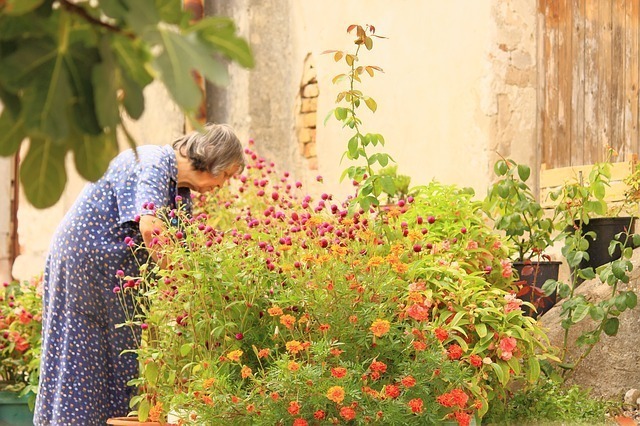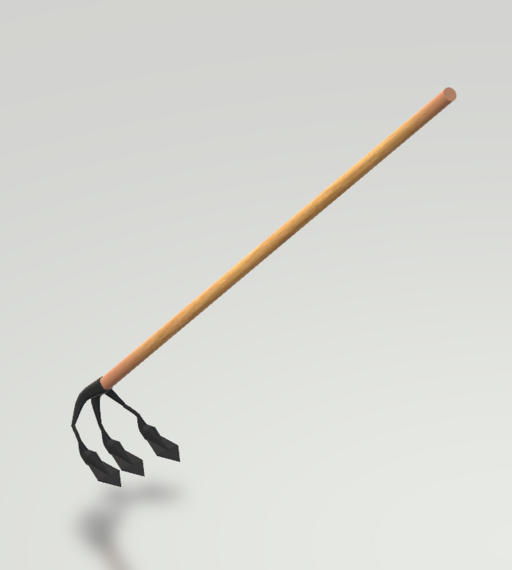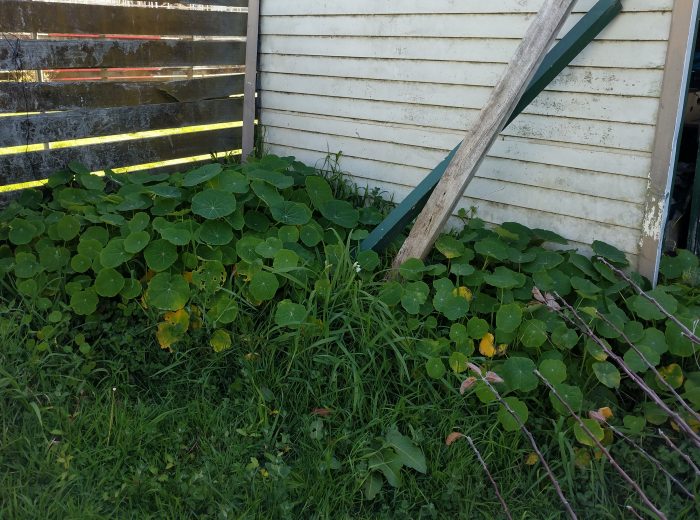I’ve always liked the idea of being a gardener. I took Horticulture in the fourth form, and Agriculture/Horticulture in the sixth form. I even toyed with the idea of becoming a landscape architect. Gardening is a classic Little Old Lady enthusiasm, and an area in which I have always felt I fell short of true Little Old Lady-hood.
 Because when it comes down to it, I have seldom ever actually gardened, and I think the reason for this lies in my childhood. We moved house frequently, so while there was always gardening to be done, we seldom hung around long enough to see the fruits of our labour. In fact, when I had to grow a garden for school (back in my primary days) I had to grow it at a friend’s house, so as to ensure continued access.
Because when it comes down to it, I have seldom ever actually gardened, and I think the reason for this lies in my childhood. We moved house frequently, so while there was always gardening to be done, we seldom hung around long enough to see the fruits of our labour. In fact, when I had to grow a garden for school (back in my primary days) I had to grow it at a friend’s house, so as to ensure continued access.
The result of all this was that I subconsciously filed gardening under ‘thankless toil’ and never did it unless I had some particular reason to – such as the vegetable garden I grew in the fourth form. My excitement when I saw something I’d planted actually produce knew no bounds. I even dragged my mother out to look at them when she got home. I don’t think she understood why I was so excited about pea plants producing peas, but she duly admired them all the same.
My enthusiasm – particularly as far as weeding was concerned – was rather dented by that same garden, however. While getting down to weed’s eye level to wreak havoc on the little pests, I discovered that weed’s eye view is also really-quite-large-frog’s-eye-view. I don’t know which of us had the worst fright.

So without anything much to motivate me, I seldom gardened; and my occasional bursts of enthusiasm were not enough to make the garden thrive. Such enthusiasm as I had was dampened by the regularity with which the weeds returned and the seeds I’d planted failed to grow. Now, however, being the sole lady of this little demesne, I find that my attitude to gardening is slowly changing.
Instead of the source of unremitting toil which will never render any return, I am beginning to look on the garden as something which is mine to nurture, and which will repay my efforts on its behalf with Good Things – food, and pleasant scents, and leafy sun-dappled shade.
So I have started to garden, little by little. I have dipped my toe into pruning, weeding, planning, repotting, planting – including some seeds which actually sprouted (magic beans from my mother). We’ve even eaten some of the produce of our garden (mint, nasturtiums, redcurrants and lemons). And yet, into this nascent Eden has crept a snake: the accursed Convolvulus, or bindweed.
 The Caped Gooseberry has been waging daily war on it for weeks (my hero!), and yet the evil flourishes. “Have at him, chop him up, turn his roots upward to the sun, don’t let him have a fibre in the shade, if you do he’ll turn himself t’other side up and be as green as a leek in two days,” as Thoreau observed in Walden.
The Caped Gooseberry has been waging daily war on it for weeks (my hero!), and yet the evil flourishes. “Have at him, chop him up, turn his roots upward to the sun, don’t let him have a fibre in the shade, if you do he’ll turn himself t’other side up and be as green as a leek in two days,” as Thoreau observed in Walden.
Convolvulus is like the plant version of the Black Death: even a tiny bit of infection left behind can turn into a full-blown epidemic in a matter of days. If it was edible, we could feed the world with it. As Dave Barry said of crabgrass, “it can grow on bowling balls in airless rooms, and there is no known way to kill it that does not involve nuclear weapons.” And unlike bubonic plague, its victims don’t have a 50% chance of survival. If they aren’t rescued when the Tendrils of Relentless Destruction coil around them, they will be gradually choked to death. It is the Boa Constrictor of the plant world, and it grows a good deal faster.
And so I have been moved to compose this comminatory sonnet, addressed to the vile midnight strangler that creeps about my garden.
 How I do loathe thee! Let me count the ways:
How I do loathe thee! Let me count the ways:
I loathe thee to the depth and breadth and height
Thy tendrils reach, and roots spread out of sight
Which all within their choking grasp embrace.
I loathe thee with the effort of each day’s
Repeated work, as my man fights the fight.
I loathe thee, as do all who see aright;
I loathe thee with the fullness of my phrase.
I loathe thy hypocritical false flower,
As with pure white thou seek’st to fool the eye;
I loathe thy strength, thy killing wield of power;
Thy weakness, using others to grow high.
And so my curse, from roots to usurped tower:
To twine about thyself, and, strangling, die.
with a nod to Elizabeth Barrett Browning
and No.43 of the Sonnets from the Portuguese (they aren’t)






